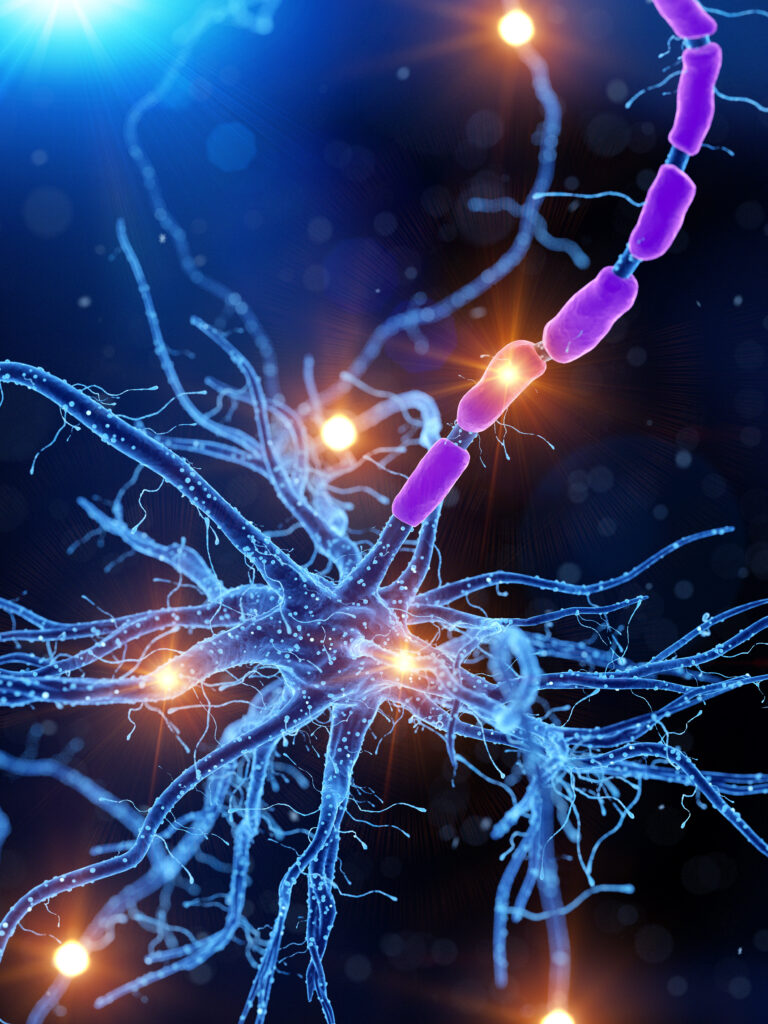Alzheimer’s disease is a progressive neurodegenerative disorder that affects millions of people worldwide. It is the most common form of dementia, accounting for 60-80% of all cases. This disease is characterized by the buildup of two types of protein in the brain – amyloid beta and tau. These proteins form plaques and tangles, respectively, which disrupt the communication between nerve cells and ultimately lead to their death.
While the exact cause of Alzheimer’s disease is still unknown, researchers have identified various factors that may contribute to its development. One of these factors is the dysfunction of the noradrenergic system, a complex network of neurons that release a chemical messenger called noradrenaline.
Noradrenaline, also known as norepinephrine, is a neurotransmitter that plays a crucial role in regulating various functions in the body, including memory, attention, and mood. It is produced by neurons in the locus coeruleus, a small area in the brainstem that is responsible for controlling the release of noradrenaline throughout the brain.
In individuals with Alzheimer’s disease, the locus coeruleus is one of the first brain regions to show signs of degeneration. This leads to a decrease in the production and release of noradrenaline, resulting in a disruption of the noradrenergic system.
Research has shown that this disruption can have a significant impact on the progression of Alzheimer’s disease. Noradrenaline is essential for maintaining the balance between two key enzymes – beta-secretase and alpha-secretase. These enzymes are responsible for breaking down amyloid beta protein. In Alzheimer’s disease, there is an imbalance between these enzymes, leading to an increase in amyloid beta buildup.
Furthermore, studies have also shown that noradrenaline plays a crucial role in regulating inflammation in the brain. Inflammation is a natural response of the body to injury or infection, but in Alzheimer’s disease, it becomes chronic and can cause damage to nerve cells. Noradrenaline helps to reduce this inflammation by activating certain receptors on immune cells in the brain.
Moreover, the noradrenergic system also plays a role in promoting the growth and survival of nerve cells. In individuals with Alzheimer’s disease, the decrease in noradrenaline leads to a decrease in the production of brain-derived neurotrophic factor (BDNF), a protein that is essential for the growth and maintenance of neurons. This decrease in BDNF can contribute to the death of nerve cells and the progression of Alzheimer’s disease.
In addition to its role in Alzheimer’s pathology, the noradrenergic system also plays a significant role in the symptoms of the disease. As mentioned earlier, noradrenaline is involved in regulating attention and memory, and its dysfunction can lead to impairments in these cognitive functions. It can also contribute to mood changes, such as depression and anxiety, commonly seen in individuals with Alzheimer’s disease.
Furthermore, research has shown that medications that target the noradrenergic system can have beneficial effects on cognitive symptoms in Alzheimer’s disease. For example, drugs that increase noradrenaline levels have been shown to improve memory and attention in individuals with the disease.
In conclusion, the noradrenergic system plays a crucial role in the pathology and symptoms of Alzheimer’s disease. Its dysfunction can contribute to the development and progression of the disease by disrupting the balance between enzymes responsible for breaking down amyloid beta protein, promoting inflammation, and decreasing the production of BDNF. Understanding the role of the noradrenergic system in Alzheimer’s disease can lead to the development of new treatments that target this system, providing hope for those affected by this devastating disease.





